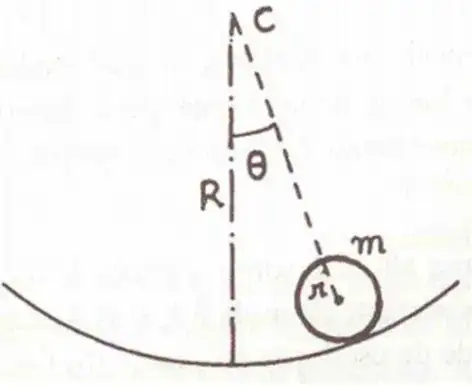A ball with mass $m$ and radius $r$ rolls without sliding inside a cylinder with radius $R (R>>r)$, with $\theta <<1$. Find the angular frequency $\omega$

What I Know: There are two movements involved: the rotation of the center of mass around the center of the cylinder $C$ and the rotation around the center of mass. These two movements are coupled because there is no sliding. So, if $\theta_{1}(t)$ is the angular displacement associated to the rotation around the center of mass and $\theta_{2}(t)$ is the angular displacement associated to the rotation of the center of mass, then:
$R\dot\theta_{2} = r\dot\theta_{1}$
If the movement were merely the rotation of the center of mass, then: $ma_{\theta} = -mg\sin(\theta) \therefore mR\ddot\theta = -mg\sin(\theta)$ (the tangent axis is oriented to increasing values of $\theta$) This would give $\ddot\theta + \frac{g}{R} \theta = 0$, considering $\sin \theta \approx \theta $. In this case, we would simply have $\omega = \sqrt{\frac{g}{R}}$.
I don't know how to account for the fact that the ball is also rolling. Could someone give me a hint to solve the original problem, considering the existence of two movements?